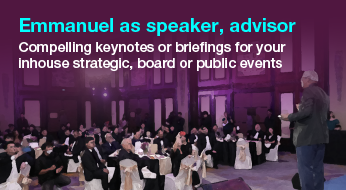I may as well go ahead and say it outright – “financial inclusion” as defined by the platform players, is a lie.
We need to admit that the ways in which the platform players have been formulating their “financial inclusion” business models are not designed to help the poor at all. It is designed to populate their platforms and monetise them.
There is not a single technology driven financial inclusion model today that are designed to pass on the savings to the poor or even allow them to generate wealth. Even the idea of making finance “cheaper” is an anachronism.
But digital inclusion is a parallel concept that is alive and well, and it has been bringing hundreds if not thousands of poverty-striken communities into the global economy in a way that was not possible before.
First, let me list why I say that “financial inclusion”, as defined by the platform players, is a lie.
We are told that the World Bank, in a 2011 survey, says that “75% of the world’s poor” do not have “bank account”. The question we should ask is why does anyone need a bank account today, especially the poor. The use of a bank account to the poor is so wrong at so many levels, that it shows how some agencies totally misunderstand the purpose of finance.
When finance has been reduced to transacting on a chip on a mobile device, when banks pay out paltry interest rates for bank deposits, when new technology-driven wallets attach the poor to communities that they can benefit from transacting with, and advances in blockchain technology links farmers to buyers from the other side of the world, a bank account would be the most patronising intermediary that a World Bank could recommend.








